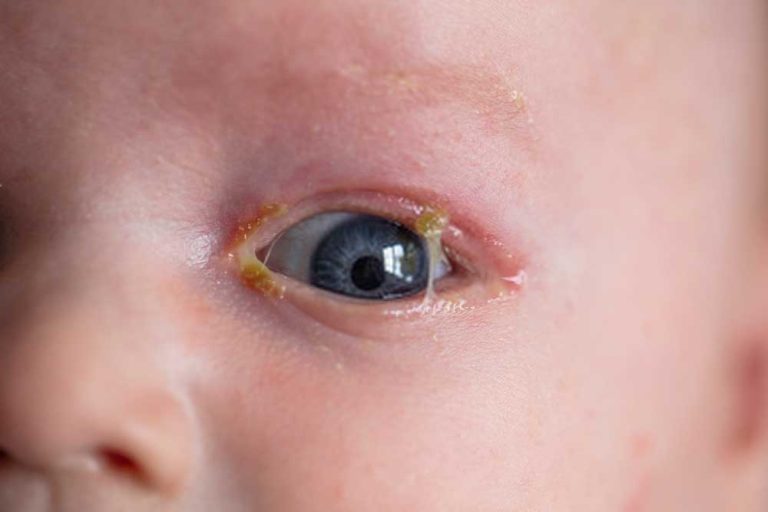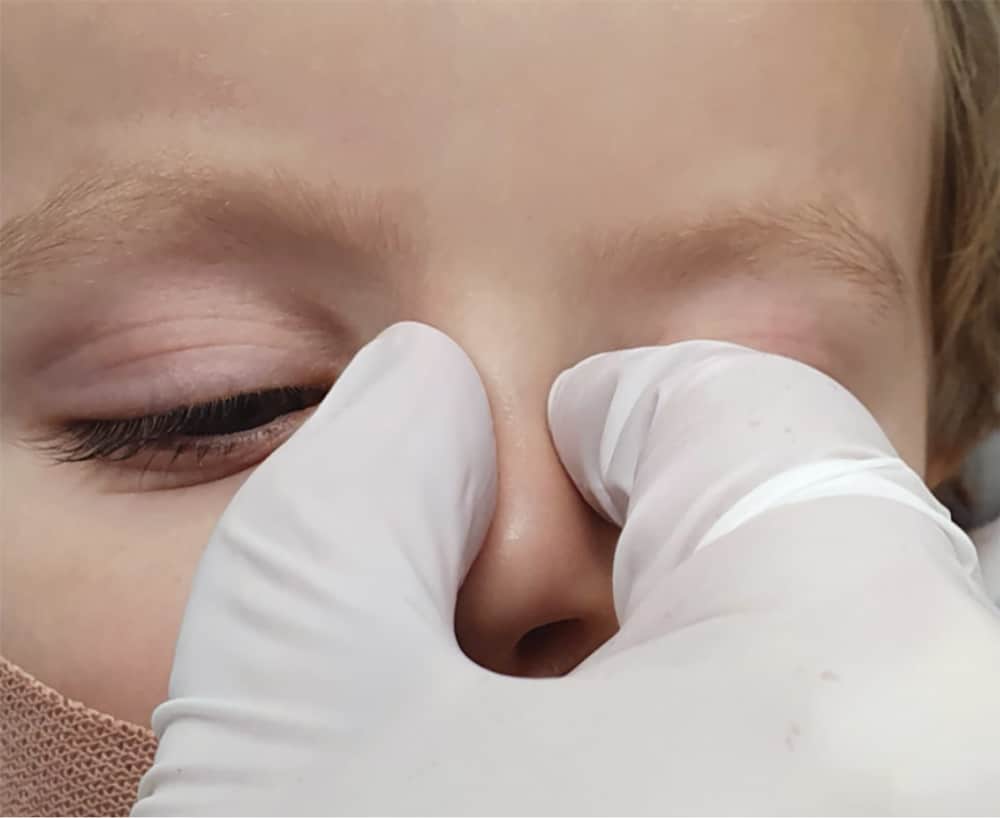As a new mom, getting paranoid about everything concerning your toddler is normal.
If your toddler has been experiencing some watery, yellowish discharge lately, you should understand this is quite common, and there’s nothing to worry about.
This yellow or whitish discharge from babies’ eyes is known as “sticky eyes.” It is a fairly usual phenomenon and often harmless.
While addressing concerns about eye health, it’s fascinating to note that newborns’ eye colors can also interest parents. If you’re curious about predicting your newborn’s eye color, you can read more about using a newborn eye color predictor chart.
In this blog, we will address the issue of eye discharge in babies and find answers to when to seek medical attention in this case. Let’s get started!
The Problem of Sticky Eyes
Sticky eye is a very common phenomenon in newborn babies or toddlers. In most cases, there is a yellowish discharge from the eye, which may be watery or a bit thicker in some cases. A common opinion regarding sticky eyes is that they happen because of a blocked tear duct.
American Academy of Ophthalmology states that about 20% of newborns may have their tear ducts blocked.
The discharge often happens when the tear ducts of babies are in the developmental phase and are not open by that time.
Mostly, the tear ducts open by themselves after a few days or months so that the condition may improve.
However, there may be other underlying causes, which should not be taken lightly if the condition persists for a long time.
The Underlying Causes of Sticky Eyes
As stated above, more often than not, sticky eyes or the yellowish discharge from babies’ eyes are due to blocked tear ducts. Here’s a simple explanation to understand it better and simpler.
The top part of the eyelids has glands that produce tears. The tears produced in this part go over the eye surface and drain from the opening in the lower and upper eyelids.
These tears go over to the nose via tiny tear ducts. Few newborns have very narrow or blocked tear ducts, which makes it impossible for the tears to drain away, causing the eye to appear watery all the time.
Although it is a prominent cause of the yellowish discharge, always consult your pediatrician about it, and do not take it for granted.
Sometimes, the discharge leads to more prominent infections, which can be fatal. Some other common causes of a watery discharge may include conjunctivitis, allergy, etc.
Treatment and Care at Home
As stated, yellow discharge from the eyes of the babies is usually not a matter of serious concern. It can be easily managed at home with few precautionary measures.
A few home treatments for it may include the following.
1. Gentle Wiping and Cleaning
The discharge from the eyes can be quite troublesome for babies; sometimes, they may experience trouble opening their eyes.
In this situation, first, you must wash your hands and then dip a cotton ball in a sterile solution. Now squeeze out the excess liquid and gently wipe the eyes of the baby with it.
Work through the corner of the eye and clean it thoroughly. If the cotton gets dirty, use another piece of cotton to clean further. Usually, the tear ducts in infants open by 3-6 months.
2. Massaging Tear Ducts
Massaging the tear duct and cleaning the eyes can promote its opening, thereby eliminating the yellow discharge.
However, massaging should be done after taking advice from a medical practitioner.
For massaging, you can gently press the area between the corner of the eye and nose with the tip of your index finger.
Massage gently yet firmly, going from upward to downward. You can do it twice a day.
However, if you see any changes in the baby or it looks like it is experiencing difficulties during massage, you should immediately stop it and consult a doctor.
Medical Treatment
Sometimes, just wiping, massaging, or any other home treatment is not enough to treat sticky eye conditions. Some cases require medical attention.
1. Use of Medicines
In case of persistent discharge from the eye or discomfort experienced by the toddler, it’s better to seek medical attention rather than depending on home treatments.
Doctors usually check the severity of the condition and advise medications based on it. Antibiotics are usually given to treat sticky eyes.
Doctors advise observing the following symptoms in toddlers to ensure that they need medical attention in case of sticky eyes. These symptoms include:
- Redness
- Swelling
- Pain
- Difficulty in opening and closing eyes
- Yellow discharge
- Thick discharge
- Discharge persisting for a long time
2. Surgery in Extreme Scenarios
In cases where the baby’s tear ducts remain closed even after one year, a doctor may advise surgery.
A nasolacrimal duct probing is done, and doctors tend to open the tear duct and flush out the excess dirt that may have collected in the region.
Surgery is only advised in severe cases, such as when the babies have a thick yellow discharge, have swelling or redness along with it, or are having trouble opening their eyes.
Surgery may be the last resort if the discharge is severe and lasts longer, even after cleaning and massaging.
Conclusion
Our babies are our world, and seeing them in discomfort truly breaks our hearts. Doesn’t it?
Sticky eyes can be tricky in toddlers and newborns, which may or may not require serious attention, depending on the situation. Analyzing the condition and looking for ways to treat it is important.
Usually, a discharge from a toddler’s eye may not be a grave concern and may subside.
However, in cases where the babies experience extreme discomfort, it is advised to get medical attention.
It should be noted that although the sticky eye is quite common in newborns and toddlers, if the symptoms persist longer than usual, proper medical care should be provided.
Hope this helps. Let us know in the comments!













